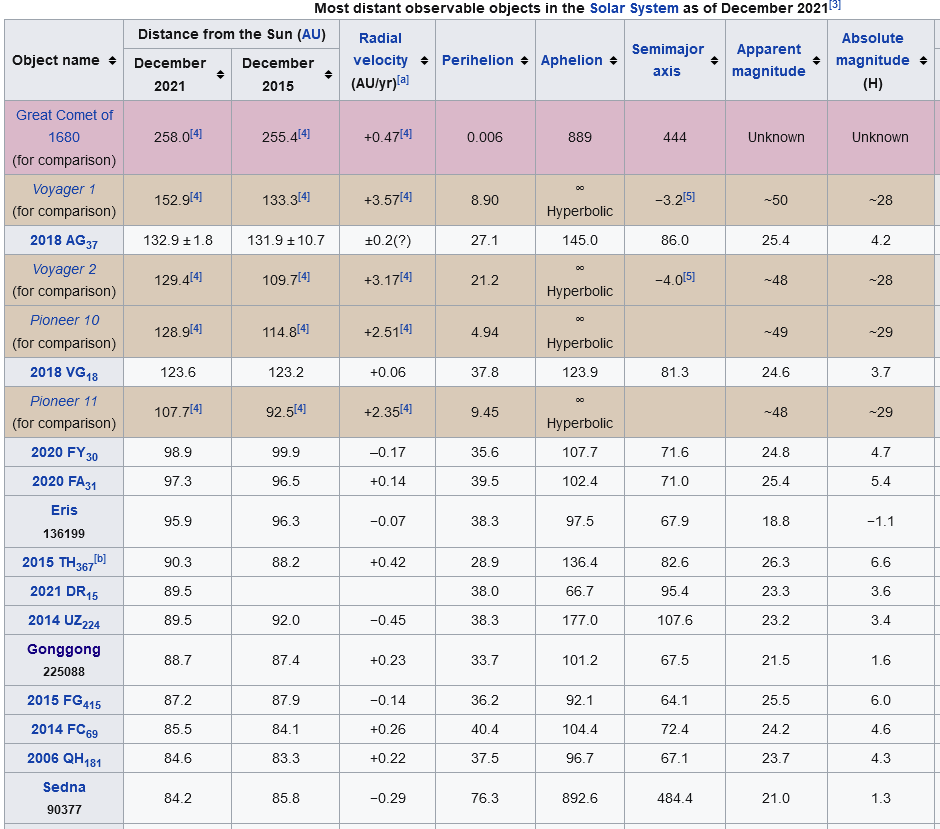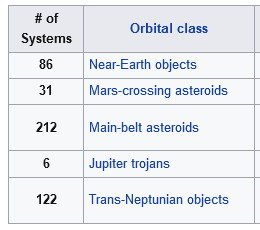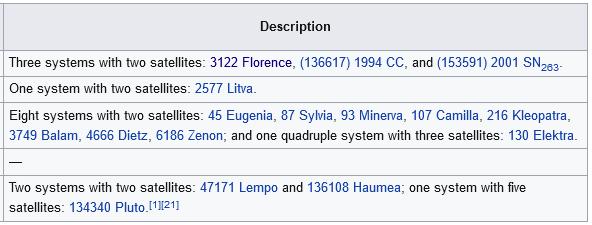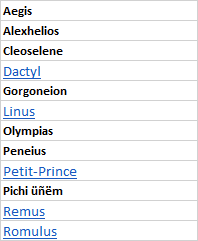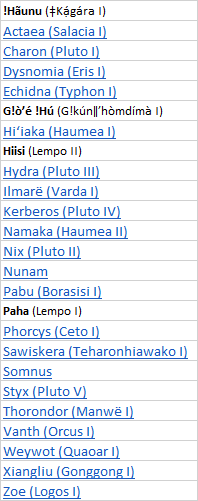Following on from https://tokyo3.org/forums/holiday/topics/15789/ Comet C/2014 UN271
I got to wondering about other objects in the solar system.
For starters, how many named rocks are there in the solar system? What is the smallest? What are the furthest? How many moons are there? etc.
Let’s start with named rocks. “Pluto” counts as a name, “(15788) 1993 SB” does not. The website https://minorplanetcenter.net/iau/lists/MPNames.html gives an alphabetical list of names of minor planets. Copying that to Excel, I count 23,172 different names of named minor planets. Last updated on 2022 Apr. 11.
So you’d expect that list to be complete. It isn’t. I immediately noticed that Xiangliu is missing from the list.
This website https://www.go-astronomy.com/planets/planet-moons.htm lists 219 moons of planets and dwarf planets. Including Xiangliu.
Number of Moons:
Earth – 1. (Note, Earth also has temporary moons, but they’re included among minor planets).
Mars – 2.
Jupiter – 79 moons, of whom 57 have names (others called S/2016 J1 and similar)
Saturn – 82 moons, of whom 53 have names
Uranus – 27 moons, all named
Neptune – 14 moons, all named
Pluto – 5 moons, all named
Haumea – 2 moons
dwarf planets Orcus, Makemake, Eris, Salacia, Quaoar, Varda, Gonggong – 1 moon each, all named
Xiangliu is the moon of Gonggong, Actaea is the moon of Salacia, Ilmarë is the moon of Varda, etc.
making 219 moons of planets and dwarf planets in all, of which 168 are named.
What of Dactyl, Linus and Petit-Prince? Still missing. Dactyl is famous as the moon of asteroid Ida. The other two are also asteroid moons. Any other named asteroid moons?
Yes. These range from near-Earth to main belt to Jupiter trojans to trans-Neptunian. There is no guarantee that this list is complete.
Dimorphos is the moon of Didymos.
Squannit is the moon of Moshup.
Peneius is the moon of Daphne.
Romulus & Remus are the two moons of Sylvia.
Aegis & Gorgoneion are two moons of Minerva.
Alexhelios & Cleoselene are two moons of Kleopatra.
Olympias is the moon of Roxane.
Menoetius is the moon of Patroclus.
Skamandrios is the moon of Hektor.
Queta is the moon of Eurybates.
Hiisi & Paha are the two moons of Lempo.
Gǃòʼé ǃHú is the moon of Gǃkúnǁʼhòmdímà.
Have they doubled up on the name “Romulus” by any chance? Used once for an asteroid and a second time for a moon?
If so, this may be the only slip-up in accidentally duplicating solar system body names.
Anyway, I get 19 names for moons of asteroids and small TNOs.
What about comets? Comets are included.
So to summarise, the number of named bodies in the solar system is:
23,172 – Asteroids and trans-Neptunians
168 – Moons of planets and dwarf planets
19 – Moons of asteroids and small trans-Neptunians
8 – planets
1 – star
Making a total of 23,368 named bodies in the solar system as at 11 April 2022.
Approximately.
So if you want a name for your child or grandchild or godchild then there are plenty from the Solar System to choose from.
